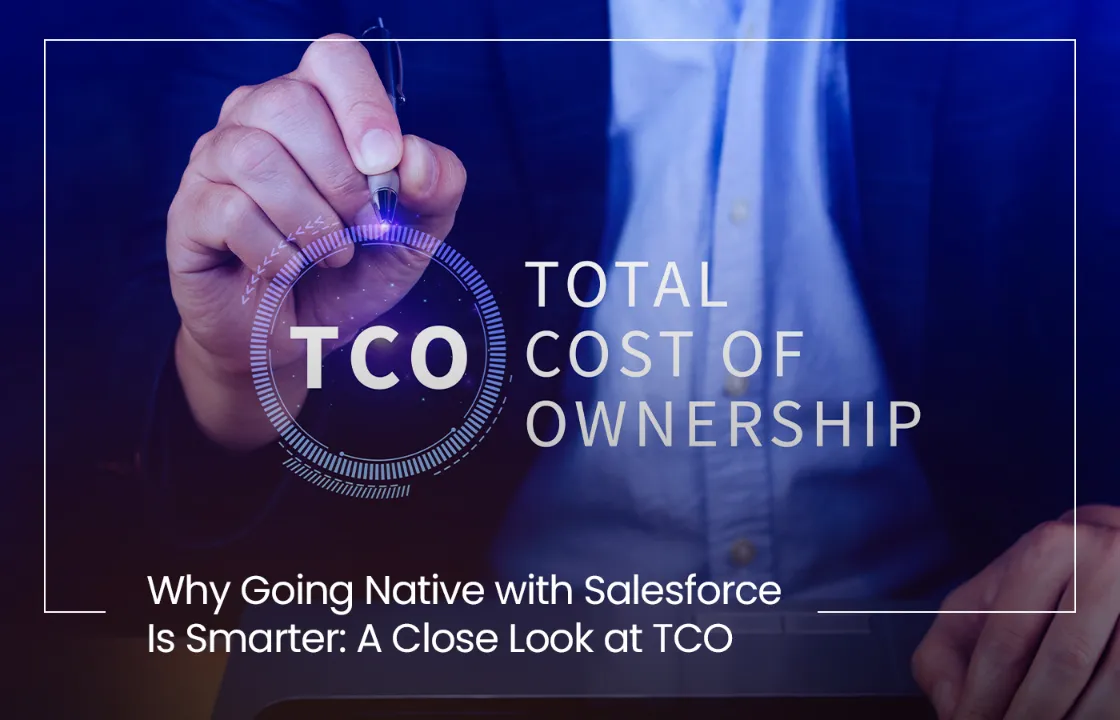Why Going Native with Salesforce Is Smarter: A Close Look at TCO

For small and mid-sized enterprises (SMEs), every investment must strike the right balance between functionality, scalability, and cost. In the world of CRM and automation, Salesforce reigns supreme. But when it comes to extending its capabilities through apps and integrations, a critical decision arises: Should you choose a native Salesforce app or opt for a third-party integration?
While third-party tools may seem cost-effective initially, native Salesforce apps offer hidden advantages that reduce long-term expenditure and technical debt.
In this blog, we explore How Native Salesforce Apps Help Reduce the Total Cost of Ownership (TCO) – specifically through the lens of SOLFI, a 100% native Salesforce application.
What Does “Native” Mean in the Salesforce Ecosystem?
A native Salesforce app is built entirely on the Salesforce Platform, using the Salesforce platform, its data models, security architecture, licensing and interface. Native apps run within the Salesforce org – no external hosting, third-party databases, or middleware required, therefore, they reduce long-term maintenance costs
In contrast, third-party (non-native) apps often require complex integrations, external connections, data duplication, and additional training due to unfamiliar user interfaces.
Here is an interesting article about the difference of building apps with agentic AI – and how they’ll interact with existing enterprise functions.
Breaking Down Total Cost of Ownership (TCO) of Native Salesforce App
TCO includes all direct and indirect costs related to an application – such as setup, integration, licensing, maintenance, support, security, and compliance. Here’s how native apps like SOLFI can help SMEs drastically lower their TCO:
1. No API Integration or Middleware Costs
Third-party apps typically require custom connectors or middleware platforms (like MuleSoft or Zapier) to work with Salesforce. Native apps bypass this need – everything runs within Salesforce itself.
With SOLFI, SMEs avoid recurring integration costs and reduce development dependency.
2. Lower Security & Compliance Overheads
Native apps inherit Salesforce’s security standards, including field-level encryption, user access controls, and audit trails. This reduces the need for additional risk assessments, third-party audits, or compliance software.
This makes it easier for SMEs to stay compliant with regulations such as GDPR, HIPAA, or industry-specific mandates.
3. Zero Maintenance or Sync Errors
When apps run on Salesforce, they share the same database—meaning no manual syncing, duplication errors, or failed sync jobs. This saves both time and effort, especially for lean SME teams.
4. Seamless User Experience
SOLFI looks and feels like Salesforce—because it is Salesforce. Users don’t have to switch platforms or learn new interfaces. This reduces training time and improves adoption.
5. Scalable by Design
As your business grows, native apps scale automatically with your Salesforce setup. There’s no need to re-architect or migrate to a new system when your requirements expand.
Use Case: Integrating Shopify with Salesforce to Streamline Order Management
Company Profile
A fast-growing SME in the fashion e-commerce space runs its storefront on Shopify and manages customer relationships and support through Salesforce.
The Challenge
As order volumes grew, the team faced several operational bottlenecks:
- Customer and order data remained siloed between Shopify and Salesforce
- Manual exports delayed shipping and customer service response times
- Marketing and support teams lacked a unified customer view
Custom API integrations were considered but came with high implementation costs, sync issues, and reliance on external support.
The SOLFI Advantage
By implementing SOLFI’s native Shopify-to-Salesforce integration, the company was able to:
- Automatically sync order, shipping, and customer data to Salesforce in real time
- Trigger post-purchase communications and support workflows via Salesforce Service Cloud
- Enable sales and support teams to access a 360° customer view, including purchase history and interactions
The Result
- Order fulfillment times improved significantly through automation
- Customer support became more timely and personalized
- Manual errors and reconciliation work were nearly eliminated
- Marketing teams could segment and target customers more effectively—all within the Salesforce ecosystem
For SMEs, Native Salesforce App = Reduced TCO = Savings
In a competitive market, SMEs can’t afford to overspend on tech infrastructure that’s difficult to manage or scale. Native apps like SOLFI simplify operations, reduce external dependencies, and provide a secure, scalable solution directly within Salesforce.
While the sticker price of a third-party tool may seem attractive, the lifetime value and efficiency of a native app are significantly higher.
Conclusion: Native Salesforce Apps reduce the total cost of ownership (TCO)
Choosing a native Salesforce app isn’t just about compatibility, it’s about maximizing efficiency, improving security, and lowering long-term costs. For SMEs looking to grow sustainably, SOLFI isn’t just the better choice, it’s the smarter one.
Opt for a Native Salesforce App to reduce your total cost of ownership and streamline your Salesforce experience.
Explore Salesforce integrations that need zero code and deploy 80% faster.
Start your journey with SOLFI today and unlock the power of AI-driven, native integrations: check our integration hub to pick a solution that suits you. Whether you’re a growing business or scaling globally, SOLFI has the tools to help you succeed.
